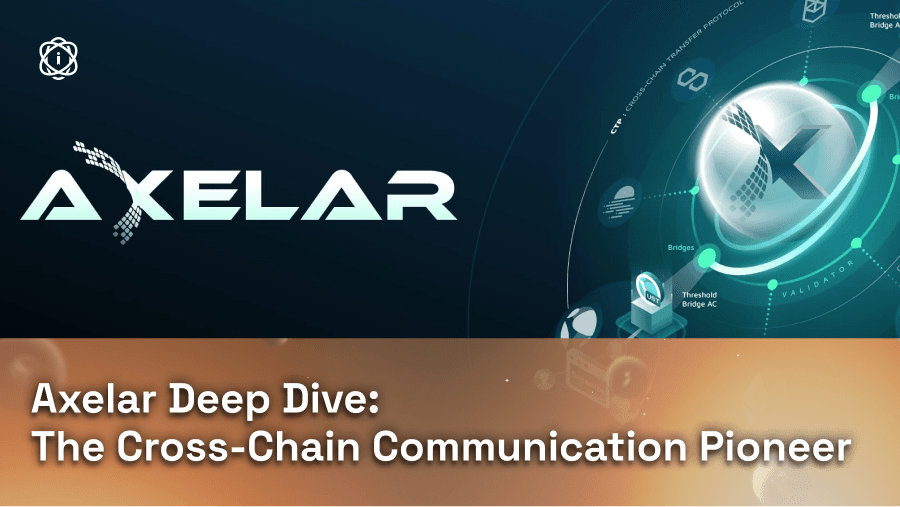Introduction to EVMs: Beyond Ethereum
The Ethereum Virtual Machine (EVM) is a term widely used to refer to blockchains that adopt Ethereum’s core infrastructure, particularly its smart contract capabilities. These EVM-compatible chains, such as Binance Smart Chain, Polygon, and Avalanche, replicate Ethereum’s functionality, allowing developers to deploy Ethereum-compatible dApps without significant modifications. The EVM’s influence extends beyond Ethereum, serving as a foundation for a broad array of blockchains that prioritize interoperability and ease of development within the Ethereum ecosystem.
The Technical Core: EVM within Ethereum
While colloquially EVM refers to the compatibility with Ethereum’s infrastructure across various blockchains, it is technically a decentralized computation engine integral to Ethereum itself. The EVM within Ethereum is a Turing-complete virtual machine that processes smart contracts, ensuring their execution across the network. This allows Ethereum to support a decentralized ecosystem where applications run autonomously and securely. Smart contracts written in Solidity or other Ethereum-compatible languages are compiled into bytecode that the EVM executes. This foundational role in Ethereum has been adopted by numerous other blockchains, cementing the EVM’s place as a critical technology in the blockchain world.
Understanding EVM Compatibility
What is an EVM-Compatible Blockchain?
An EVM-compatible blockchain is one that replicates the Ethereum Virtual Machine’s functionality, allowing it to execute Ethereum-compatible smart contracts and dApps. These blockchains are often chosen for their ability to seamlessly integrate with Ethereum’s ecosystem, providing developers with a familiar environment. The compatibility means that developers can use the same codebase across multiple blockchains, reducing the time and cost associated with deploying applications on different networks.
Key Features of EVM-Compatible Chains
- Interoperability: EVM-compatible chains enable cross-chain functionality, allowing assets and dApps to move easily between Ethereum and other blockchains.
- Solidity for Smart Contracts: Solidity remains the primary language for writing smart contracts on EVM-compatible chains, ensuring a consistent development experience.
- Standardized Address Format: These chains often use the same address format as Ethereum, starting with “0x,” which ensures uniformity across networks.
The Broader Ecosystem of EVM-Compatible Chains
Major EVM-Compatible Chains
- Binance Smart Chain (BSC): BSC is one of the most prominent EVM-compatible chains, offering lower transaction fees and faster block times than Ethereum, while still supporting Ethereum-based dApps.
- Polygon: Polygon enhances Ethereum’s scalability by providing a layer-2 solution that allows faster and cheaper transactions, maintaining full compatibility with Ethereum.
- Avalanche: Known for its high throughput and low latency, Avalanche supports the deployment of Ethereum dApps with improved performance metrics.
- Fantom: Focused on speed and scalability, Fantom is widely used in the DeFi space, offering high-performance execution of smart contracts.
- See a full list at the bottom of this page.
EVM Compatibility and Its Advantages
EVM compatibility is crucial for the development of a unified blockchain ecosystem. By adhering to Ethereum’s standards, EVM-compatible blockchains facilitate the transfer of assets and dApps across multiple platforms. This interoperability enhances the utility of blockchain technology, making it easier for developers to build applications that can operate seamlessly across different networks. Moreover, the widespread adoption of EVM compatibility reduces the learning curve for developers, as they can apply their knowledge of Ethereum to other EVM-compatible blockchains without needing to learn new programming languages or systems.
Technical Role and Functionality
How the EVM Operates
The EVM functions as the runtime environment for smart contracts on Ethereum and its compatible chains. It processes transactions by executing smart contracts’ bytecode, which is the compiled version of the high-level code written in Solidity. Each transaction executed by the EVM requires “gas,” a unit that measures the computational effort needed. Users must pay for gas in the blockchain’s native cryptocurrency, such as Ether on Ethereum, to cover the cost of executing transactions. The gas mechanism not only powers the network but also prevents spam and abuse by requiring users to contribute to the network’s computational resources.
Security and Isolation
A key feature of the EVM is its isolated execution environment, which ensures that each smart contract runs independently from others, safeguarding the integrity of the blockchain. This isolation prevents malicious contracts from interfering with the operation of other contracts or the network, making EVM-based blockchains robust and secure environments for deploying decentralized applications.
The EVM’s Evolution and Future
Adoption and Adaptation
Since its inception, the EVM has been a pivotal technology within Ethereum, and its influence has only grown with the adoption of EVM-compatible chains. These chains not only benefit from the robust infrastructure developed by Ethereum but also contribute to the broader blockchain ecosystem by fostering innovation and enhancing interoperability.
The Future of EVM-Compatible Chains
As blockchain technology advances, EVM-compatible chains are expected to continue playing a significant role in the expansion of decentralized applications. The development of layer-2 solutions and other scaling technologies that maintain EVM compatibility will further extend the utility of these chains, enabling more efficient and cost-effective transactions. The future of blockchain likely includes an increasingly interconnected ecosystem where EVM compatibility serves as a standard for cross-chain interactions and the deployment of decentralized applications.
Notable Developments
The Rise of EVM Compatibility
The adoption of EVM compatibility by multiple blockchains marks a significant development in the evolution of decentralized networks. This trend has facilitated the growth of decentralized finance (DeFi) and other blockchain-based applications by providing a familiar and reliable platform for developers.
Ethereum 2.0 and Beyond
Ethereum’s transition to Ethereum 2.0 and the ongoing enhancements to the EVM within this upgrade are expected to influence the future direction of EVM-compatible chains. These improvements may include greater scalability, security, and efficiency, ensuring that the EVM remains a cornerstone of blockchain innovation.
List of EVM-Compatible Blockchains
The Ethereum Virtual Machine (EVM) has become a foundational technology in the blockchain ecosystem, with numerous blockchains adopting its standards to enable smart contracts and decentralized applications (dApps). Below is a comprehensive list of EVM-compatible blockchains, categorized into major networks, layer-2 solutions, and other notable chains:
Major EVM-Compatible Blockchains
- Ethereum (ETH): The original blockchain that introduced the EVM.
- Binance Smart Chain (BSC): Offers lower transaction fees and faster blocks, making it a popular alternative for DeFi applications.
- Polygon (MATIC): A layer-2 solution that enhances Ethereum’s scalability, offering lower fees and faster transactions.
- Avalanche (AVAX): Provides high throughput and compatibility with Ethereum dApps, supporting multiple subnets.
- Fantom (FTM): Focuses on high-speed transactions and scalability, particularly for DeFi projects.
- Tron (TRX): Originally based on Ethereum’s code, now a high-throughput blockchain with a focus on decentralized internet.
- Harmony (ONE): Features fast and low-cost transactions, with sharding technology to enhance scalability.
- Celo: A mobile-first platform aimed at financial inclusion, with full EVM compatibility.
- Moonbeam (GLMR): A Polkadot parachain offering a full EVM implementation.
- xDai Chain: Known for stable payments and low transaction costs, with full EVM compatibility.
Layer-2 EVM-Compatible Solutions
- Arbitrum: A layer-2 scaling solution that uses optimistic rollups to reduce fees and increase transaction throughput.
- Optimism: Another layer-2 solution utilizing optimistic rollups, focusing on scaling Ethereum while maintaining compatibility.
- zkSync: A layer-2 solution that uses zkRollups to provide security and scalability with low gas fees.
- Boba Network: A layer-2 platform offering fast transactions and lower fees with a focus on hybrid compute.
Other Notable EVM-Compatible Chains
- Aurora: A layer-2 solution built on NEAR Protocol, offering scalability and low gas fees.
- Telos EVM: A scalable solution for Solidity-based applications with a focus on DeFi.
- Velas: An ultra-fast EVM blockchain with extremely high throughput, capable of processing up to 75,000 transactions per second.
- RSK: A sidechain of Bitcoin, bringing smart contracts and higher scalability to the Bitcoin network.
- Moonriver: A companion network to Moonbeam, built on Kusama, and acts as a canary network for testing and deploying new features.
- Songbird: A canary network for the Flare blockchain, enhancing cross-chain interoperability.
- Metis Andromeda: A layer-2 rollup platform designed to scale Ethereum-based applications.
- Klaytn: A user-friendly blockchain developed by Kakao, aimed at mass adoption with EVM compatibility.
- Theta: Focuses on decentralized video streaming, incorporating EVM for smart contract functionality.
- Skale: An elastic blockchain network that scales Ethereum dApps to millions of users without gas fees.
- TomoChain: A blockchain designed for enterprise applications, offering fast transactions and privacy features.
These blockchains, among others, have adopted the EVM to provide a standardized environment for decentralized applications, fostering interoperability and expanding the reach of Ethereum’s ecosystem. The widespread adoption of EVM-compatible blockchains highlights the importance of this technology in the ongoing development and scalability of blockchain networks.







